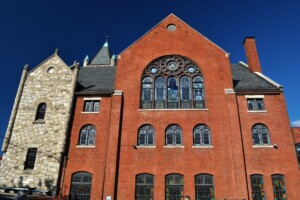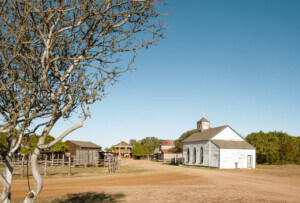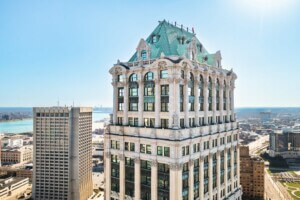Detroit’s Jefferson-Chalmers District has been named a National Treasure by the National Trust for Historic Preservation. The early 20th-century commercial district is the first neighborhood in the National Trust’s new ReUrbanism initiative.
Built primarily in the 1920s, Jefferson Avenue on Detroit’s Lower Eastside was once a key commercial district for the city. In the past 40 years the Jefferson-Chalmers District, like much of Detroit, has struggled with economic instability due to loss of manufacturing jobs and population. The area currently has a significant number of vacant properties, many of which are in desperate need of maintenance. Jefferson-Chalmers is Michigan’s first National Treasure.
The area is home to many of Detroit’s more historic 1920s structures, including the iconic Vanity Ballroom. This portion of the community, located along the along the Detroit River, also includes a series of canals. Recent years have seen an increased commitment from residents and business owners to revitalize the neighborhood.
The Trust’s goal is to encourage urban areas to utilize their current built assets to realize affordable, sustainable, and livable cities. The ReUrbanism initiative follows a set of ten principles, which range from “Cities are only successful when they work for everyone” to “Preservation is adaptive reuse. Adaptive reuse is preservation.” The “Heart of Louisville,” Kentucky, has also been included as a National Treasure in the ReUrbanism initiative.
Another program within the National trust is the Preservation Green Lab, a research guided initiative to reimagine uses for old urban buildings and blocks. Research conducted at the Preservation Green Lab led to a report and recommendation to list the Jefferson-Chalmers neighborhood, while project managers in the neighbor outline a path forward. Using big data, mapping, spatial analysis, the initiative bridges the gap between preservationists, developers, and policy makers. The Preservation Green Lab takes the positions that reusing and retrofitting vacant and underused buildings is key to helping cities become more sustainable, economically and environmentally.










